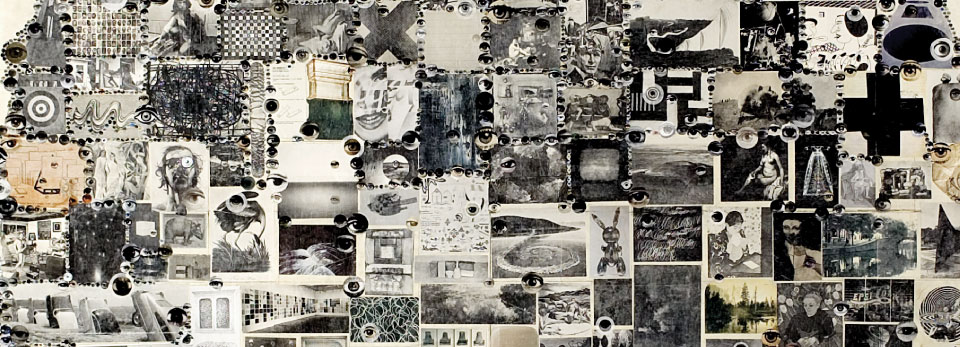


Jiha Moon: Double Welcome, Most Everyone’s Mad Here features new work by multimedia artist Jiha Moon. Moon harvests cultural elements native to Korea, Japan, and China and then unites them with Western elements to investigate the multifaceted nature of current global identity as influenced by popular culture, technology, racial perceptions, and folklore. Featuring more than 50 works, Moon blurs the lines between Western and Eastern identified iconography with use of characters from the online game Angry Birds© and smart phone Emojis, which float alongside Asian tigers and Indian gods in compositions that appear both familiar and foreign simultaneously. Moon’s witty and ironic work explores how Westerners perceive other cultures and how perceived foreigners see the West. Honoring traditional Asian arts through her use of Hanji paper, Korean silk, and calligraphic brushstrokes, she plays with iconography and symbols that have been classified as “foreign,” such as blue willow china patterns, fortune cookies (which originated in California but are identified as Chinese), Korean fans, and floating dragons and intermingles them with references to Pop and southern folk art. This exhibition is presented as part of the Visiting Artist Program organized by AU Studio Art. Jiha Moon: Double Welcome, Most Everyone’s Mad Here is organized by the Taubman Museum of Art, Roanoke, Virginia in collaboration with the Halsey Institute of Contemporary Art, College of Charleston School of the Arts in Charleston, South Carolina. The exhibition is curated by Amy G. Moorefield, former Deputy Director of Exhibitions and Collections at the Taubman Museum of Art and Mark Sloan, Director and Chief Curator of the Halsey Institute of Contemporary Art. Gallery Talk: Friday, April 13 at noon.
READ THE FULL STORY [+]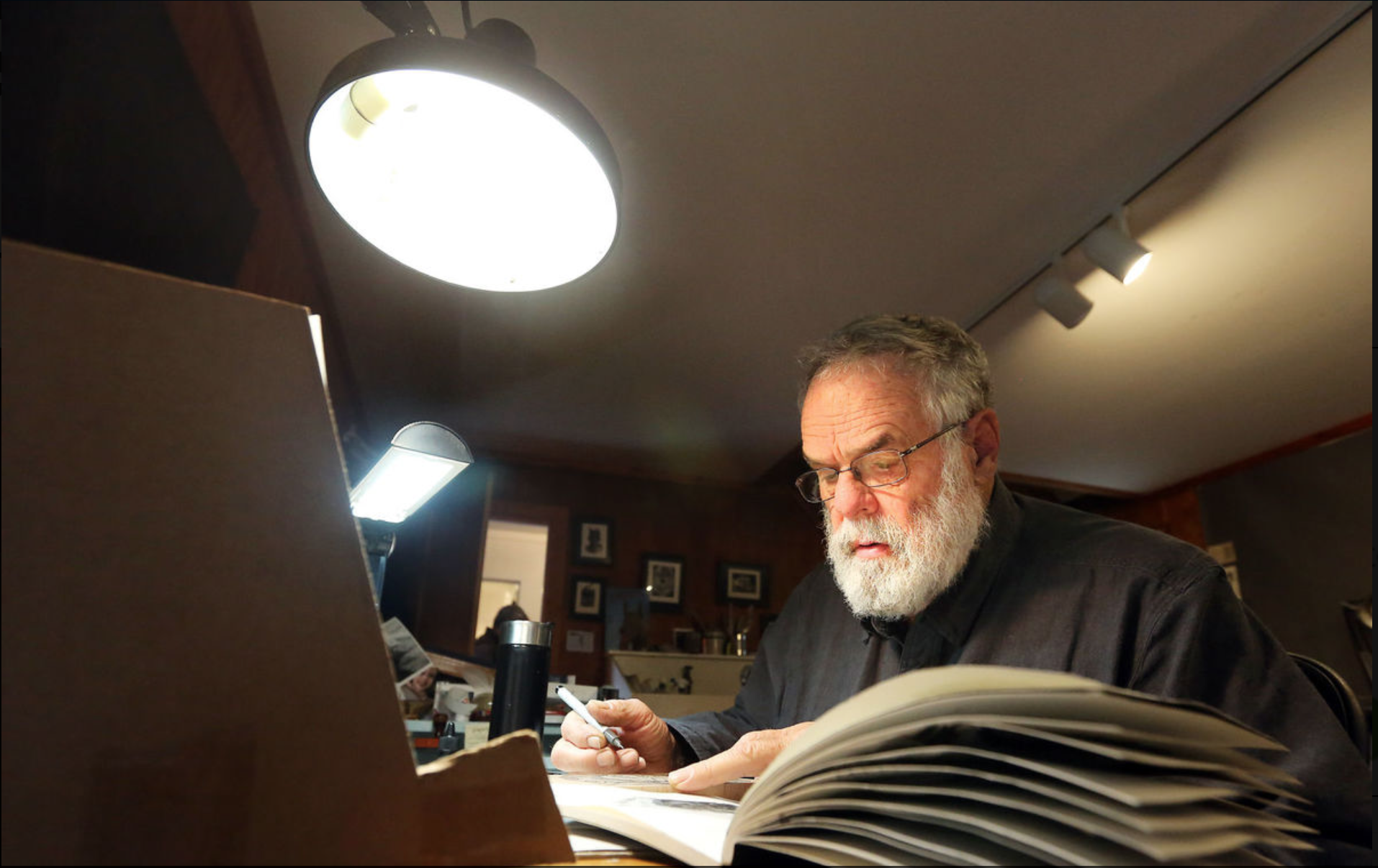
The Halsey Institute of Contemporary Art collaborated with Horse & Buggy Press to produce a special limited edition of “Sons & Father,” a small-format volume featuring McWilliams’ woodcut prints.
The book was an ancillary product of a 2016 exhibit at the Halsey called “Prophesies,” an important showcase of the work of the famously modest artist.
“I first learned of John McWilliams back in 1989 when his book ‘Land of Deepest Shade’ came out,” Sloan said. “I heard him give an artist talk at a national conference in the early 1990s, at which he showed images and told the story of building his own boat and sailing it to Bermuda. The story was riveting, and the images incredibly moving.”
Sloan marveled as McWilliams developed his printing style.
“I see him very much in the tradition of William Blake,” he said. “His works are singularly dark and foreboding. They are allegorical in their meaning. Another strong component in his work is the narrative arc. In this way, he is something of an acolyte of Lynd Ward, the graphic novelist of the 1930s. I see that both his photography and printmaking share a certain affinity for the transformative power of nature. Nature is often pitted against human nature in John’s compositions. Are we are part of, or apart from nature, he seems to be asking.”
READ THE FULL STORY [+]
The Charleston Zine Fest returns on July 28 for its third annual installment. This year, the magazine celebration is being held at the College of Charleston’s Halsey Institute of Contemporary Art. As always, it’s free to the public.
Every year, the Charleston Zine Fest honors all forms of zines, from comics to poetry to how-tos. In the past, CZF has hosted regional comic companies, like Monk Comics and Monstieur Comics of Greenville, as well as unique zines like “How to Talk to Your Cat About Evolution” and “Give a Five-Minute Blowjob in Three Easy Steps.” Last year’s event also included a panel discussion on the continuing importance of print media.
This year’s vendors and events have not been announced yet, but check back in on their Facebook page soon for an updated list. If you want to be a vendor or have a zine of your own that you want to promote, there’s still time to sign up. Just fill out their quick form.
The team behind the Zine Fest is also looking for ideas to make the festival as inclusive, educational, and impactful as possible, so if you have any suggestions for activities, you can send them to charlestonzinefest@gmail.com.
READ THE FULL STORY [+]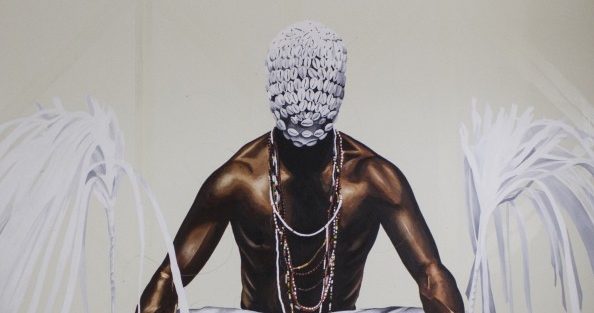
In 2002, a message appeared: “Fahamu Pecou Is the Shit!” The bold declaration, which appeared on stickers and posters around New York City, told it like it was, announcing the arrival of a new artist coming straight out of Brooklyn. Pecou, who had been doing graphic design for hip hop stars, decided to bring the language of the streets to fine art.
Over the past two decades, Pecou has used his work explore, examine, and embrace the power and presence of black masculinity in a country that alternately marginalises, fetishises, and vilifies countless lives.
With the publication of Visible Man (Halsey Institute of Contemporary Art, College of Charleston), a simultaneous two-year exhibition tour across the United States, and a concurrent exhibition MEMORY at Lyons Wier Gallery, New York (closing 31 March), Pecou looks at the ways in which the media and pop culture shape the relationship between representation and identity.
READ THE FULL STORY [+]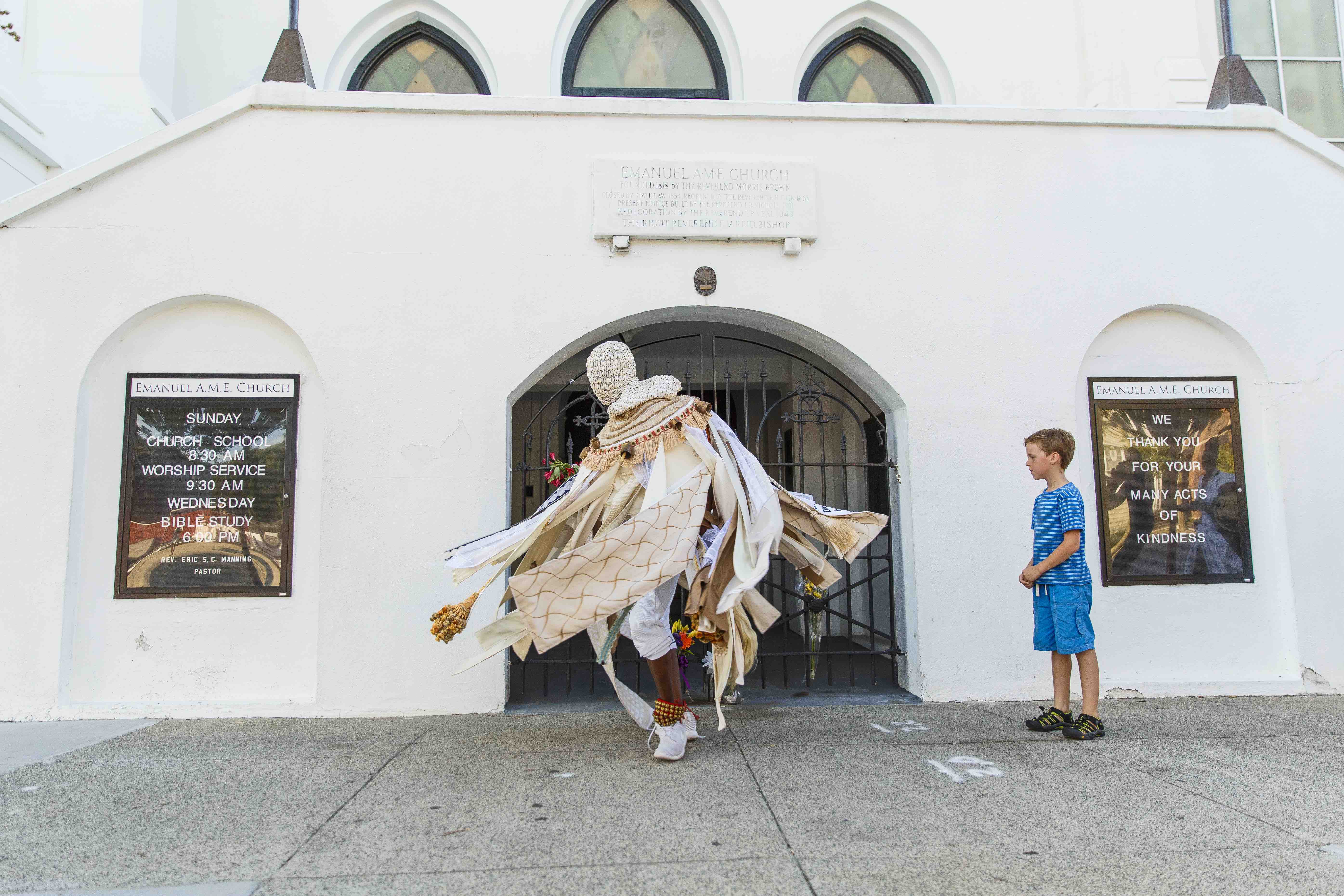
Pecou’s Egungun costume, which is displayed in the center of the show as if it were part of an anthropological exhibit, is a New World-Old World hybrid, a flywhisk and beaded cowry-shell mask blended with a hoodie, sweat pants and sneakers, while the strips of fabric, all in white, are emblazoned with the names of those who have become martyrs in the Black Lives Matter movement: Martin, Medgar, Walter, Freddy, Emmett, Trayvon, Michael. Wearing the costume, Pecou led a procession from Gadsden’s Wharf in Charleston, S.C., to the Halsey Institute of Contemporary Art to open his exhibition there in 2016, a performance made particularly prescient by the events in Charleston the following summer. For the exhibit, he recorded a similar performance in a darkened studio, images which became the source material for a group of life-size drawings that appear in the show. The photographs themselves are interspersed among a series of large paintings in Pecou’s direct, unembellished style. Like many of his previous works, in these paintings Pecou is the model, though he ceases to be the subject: with his face covered by the cowry-shell mask, he becomes the embodiment of so many spirit ancestors.
READ THE FULL STORY [+]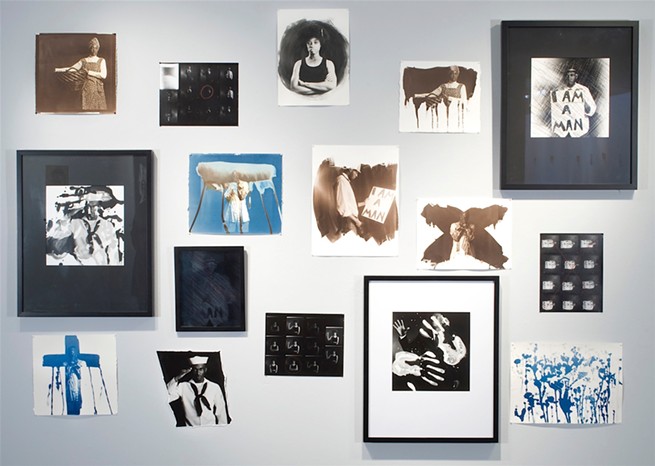
For Dontre Major’s last show as an art student, he put together a series of photographs on a subject he’d never had on display — the experience of being black in America. The work proved powerful enough to get him into College of Charleston’s 33rd Annual Juried Student Exhibition, or Young Contemporaries, as the exhibition is known at the Halsey Institute of Contemporary Art. It features the work of 48 student artists and is well-regarded in the college community.
Major is a CofC grad now, having taken the stroll across the stage in December, so it’s fitting that his “Black Amerikkka” photograph collection got its inspiration from a couple of working, out-in-the-world artists.
First, his teacher Michelle VanParys pushed him in the direction of the piece. Then listening to noted photographer Lyle Ashton Harris solidified Major’s resolve to explore a new subject in his work. To hear him talk about the art work and the people and how he was trying to show their feelings and emotions was inspiring, Major says.
READ THE FULL STORY [+]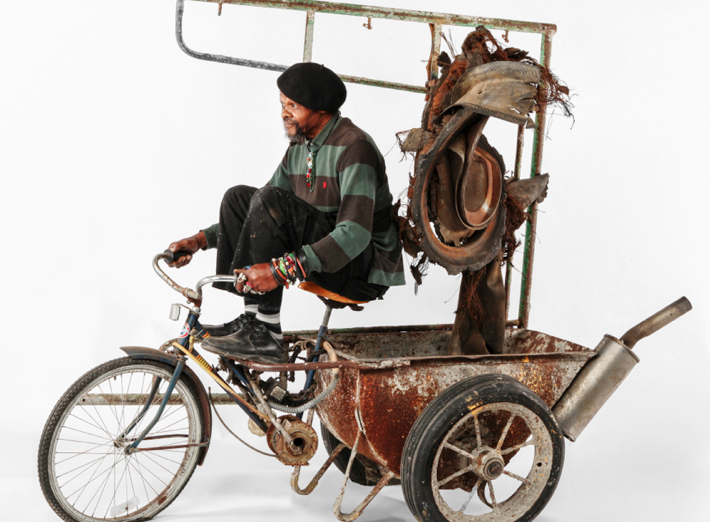
A central (and not uncommon) problem confronts the curator of a white-box gallery who wishes to exhibit the work of Lonnie Holley, an Alabama-born artist and musician typically described as self-taught or vernacular: how to present the work within the conventions established by this type of institution while also acknowledging that the artist’s animating presence is necessary to the artworks’ significance. As Bernard L. Herman argues in a persuasive essay in Something to Take My Place: The Art of Lonnie Holley, the catalogue accompanying a 2015 exhibition at the Halsey Institute of Contemporary Art, “Performance stands at the heart of Lonnie Holley’s art, in the sense that the works from which he creates found objects serve as repositories of ideas that await the enlivening moment when they are summoned forth” (35–36). Another, more recent (but unrelated) one-person show—Lonnie Holley: I Snuck Off the Slave Ship, at Atlanta Contemporary—reveals the stubbornness of museum practice and the necessity of finding ways to address its structural limitations.
READ THE FULL STORY [+]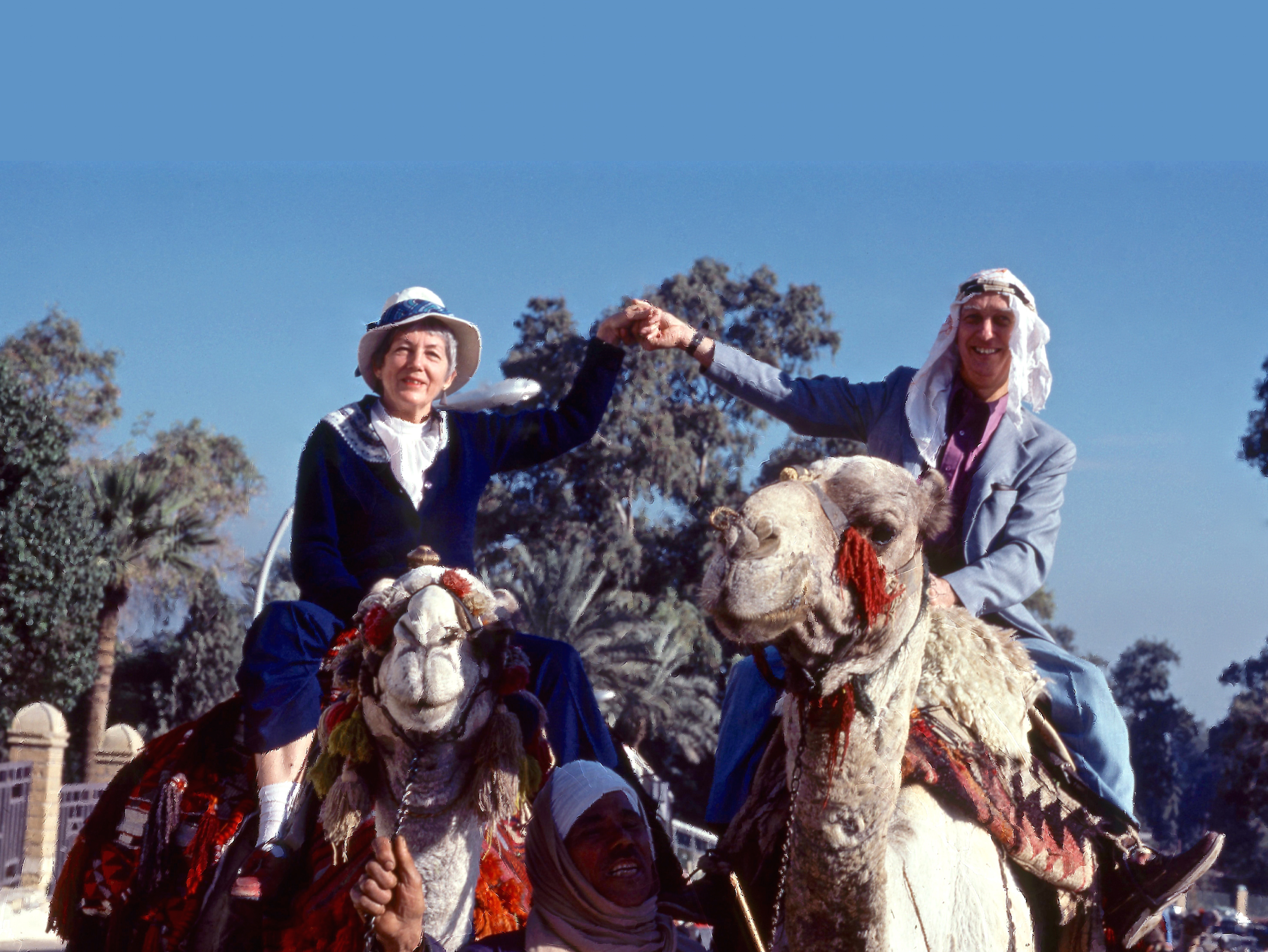
Next Wednesday, Mayor Tecklenburg will issue a proclamation officially declaring March 14 as William Halsey and Corrie McCallum Day in Charleston. The announcement, part of the Halsey Institute’s celebration honoring the couple, recognizes the invaluable contributions that the two made within the Charleston art community.
William Halsey and Corrie McCallum, after settling in Charleston in 1942, were not only renowned artists in their own right but were also pioneers in the city, particularly in the College of Charleston’s art department.
READ THE FULL STORY [+]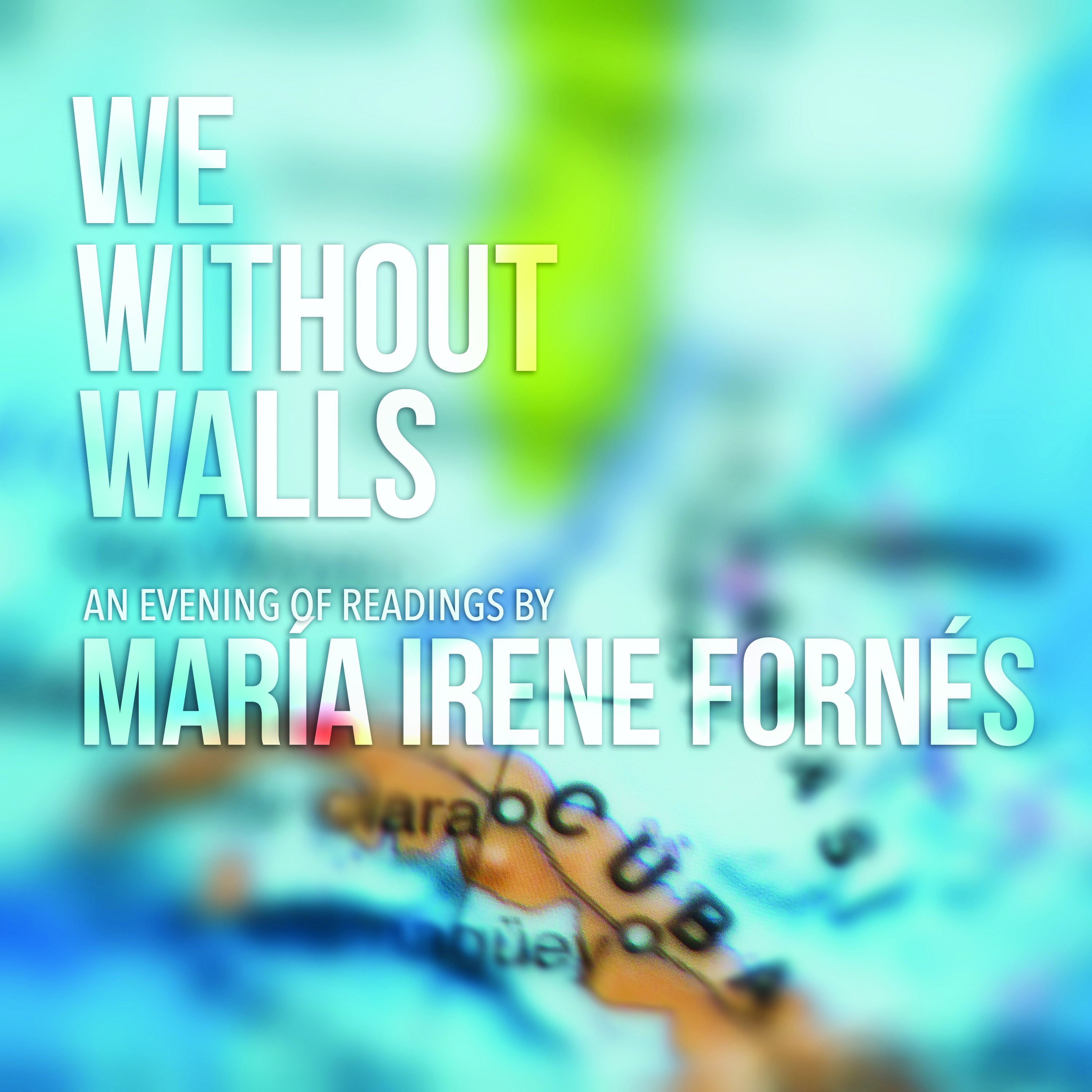
We Without Walls is part of the Dept. of Theatre and Dance’s educational outreach initiative that offers opportunities for in-depth explorations of theater history and dramaturgy to students and members of the community. Cuba en el Horizonte is an inter-disciplinary, semester-long project that recently included The Halsey’s Roberto Diago exhibit, La Historia Recordada.
In an interview with City Paper, Diago talked about his Afro-Cuban inspired work as it pertains to the cultural environment in Charleston, “This compares with the tradition in Charleston. Different things because, well, every place has its own dynamic, but there are things in common: the cultural resistance, how you adapt to adversity through music and religion, how they took instruments away from slaves and how they started using their bodies, their feet, to find rhythm.”
READ THE FULL STORY [+]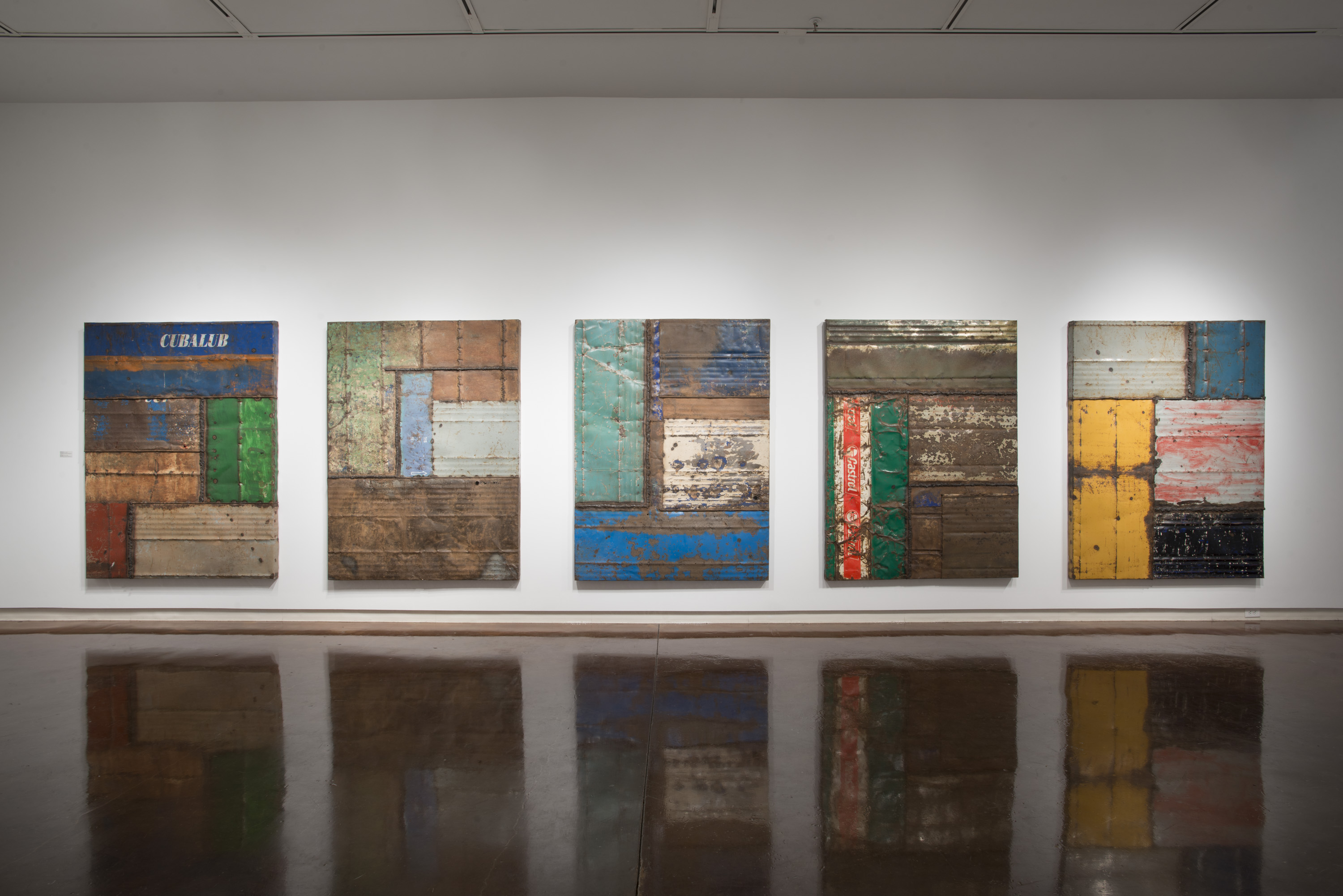
Inside the lobby of the Halsey Institute of Contemporary Art, artist Roberto Diago pointed me toward a cardboard box on the floor.
“Yeah, let’s talk here,” he said.
Diago’s friend, Carmen Santamarina, asked where I was from. When I answered ‘Dominican’, she said, “Oh well, we’re similar. Sit down.”
The cardboard boxes are part of a new composition titled “Las iniciales de la tierra,” or “The Initials of the Earth,” meant to outlast Diago’s current exhibition at the Halsey when it exhausts its run on March 3.
READ THE FULL STORY [+]